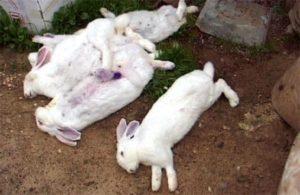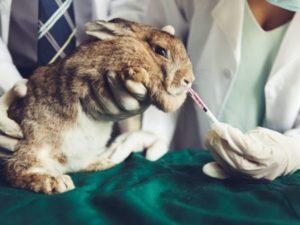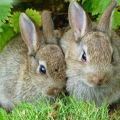Description and classification of decorative rabbits and how to determine the breed
We think of rabbits as farm animals bred for inexpensive fur and dietary meat. But these cute creatures can make excellent pets. For these purposes, many specialized breeds have been bred. However, before you start a fluffy pet, you should find out how many breeds of decorative rabbits are, how to choose and keep them.
Appointment of decorative rabbits
Along with cats, dogs, birds and fish, people use rabbits as pets. At the same time, representatives of breeds specially created for these purposes, called decorative, because they differ in compact dimensions, have no value as sources of meat or skin, are chosen as favorites, but are endowed with a number of other specific features:
- Small size, giving a chance to keep an animal even in city apartments.
- An easygoing, calm and playful character.
- Friendliness towards people and other pets, lack of aggression.
- Unpretentiousness.
- The ability to adapt to living conditions in an apartment or house.
- Good health.
- Attractive appearance.
Decorative rabbits are bred in hundreds of colors, so there is an opportunity to choose a pet to your liking. Such animals are not too picky about the conditions of existence, nevertheless, they require special knowledge for maintenance. On average, rabbits live up to 6 years, and with proper feeding and proper care, their lifespan can double.
For pets to feel comfortable in a human dwelling, it is necessary to provide them with living conditions. For rabbits, they acquire spacious cages or aviaries, but keeping them constantly locked up is unhealthy - the animals must move.
For safety, in the room where the rabbit will walk, all wires, houseplants and valuable items that it can chew and damage should be removed.
With proper upbringing, the pet gets used to going to the toilet in a certain corner of its cage or in a special box that needs to be cleaned as often as possible. This will help keep the pet healthy and free of unpleasant odors from the owners.
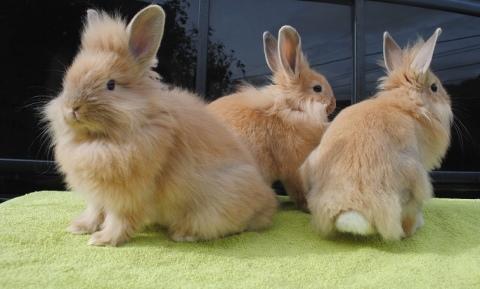
Nutrition is an important condition for the vigor and longevity of a decorative rabbit. He should receive a balanced diet as recommended by the breeder or veterinarian. It should include fresh vegetables, grass or hay, grain products, plant branches. It is equally important that the rabbit always has clean drinking water available. It is best to equip a drinker that he cannot tip over or accidentally contaminate.
Breed classification
All rabbits are classified according to the following criteria:
- By body weight:
- small;
- medium;
- large.
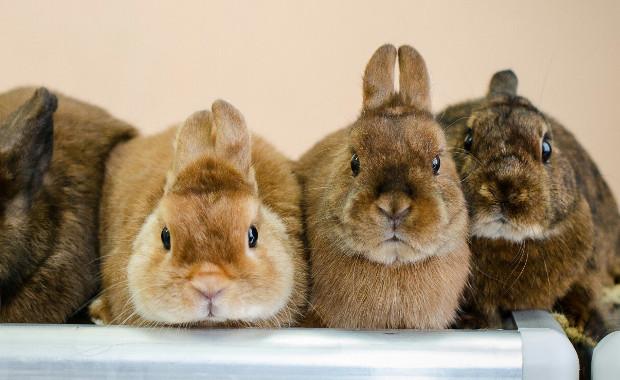
- By product type:
- meat;
- meat and skin;
- downy;
- decorative.
- By the length of the coat:
- short-haired;
- with normal coat length (standard);
- long-haired.
In this whole system, the smallest are decorative rabbits. They were bred specifically for keeping as pets, so that they have approximately the same body weight, they belong to the dwarf species.

Therefore, the classification uses parameters such as the length and quality of the coat, as well as the size and shape of the ears:
- By type of wool:
- shorthaired - standard;
- long-haired;
- wire-haired - rex;
- satin;
- lionheads.
- By type of ears:
- with upright ears;
- with drooping ears.
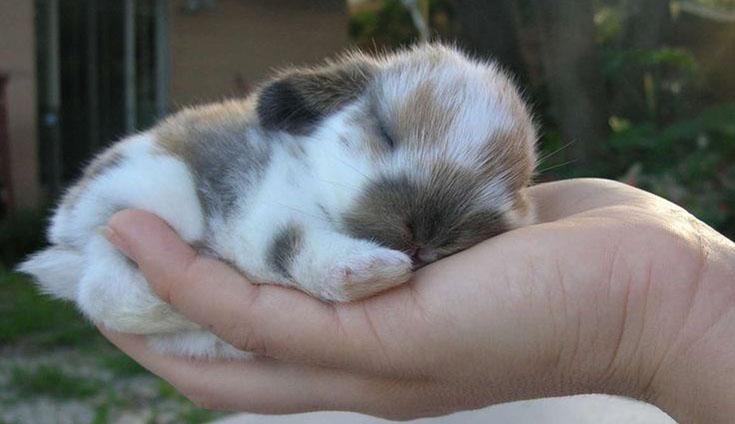
Thanks to selection, many breeds of decorative rabbits, varieties of color and type of coat have been obtained.
How do you recognize the breed?
At the moment, there is no single system of classification and standards for rabbit breeds, which leads to confusion with the identification of an animal belonging to a particular type. There is no uniformity in the names of the breeds, therefore, when buying an animal, you need to consult with experienced specialists, rabbit breeders with extensive work experience, veterinarians.
There are many decorative breeds of rabbits, among which the following are the most demanded and popular:
- Straight Ears: Himalayan, Danish, Hermelin, Dutch, Hotot, Lion Head, Butterfly, Satin, Mini Rex and so on.
- Lop-eared: Dutch dwarf, mini-ram, lop-eared plush and many others.
- Long-haired: fox, angora, Russian pygmy angora, jersey wooley.
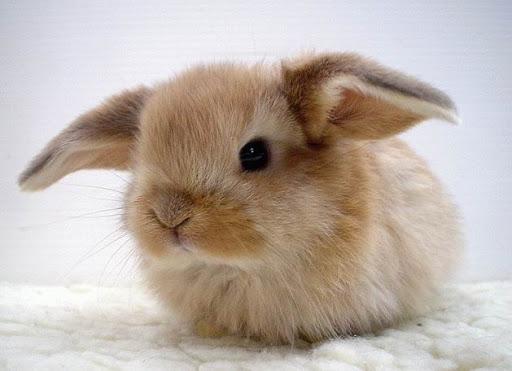
It should be noted that some breeds may be included in several points of the classification, since they can simultaneously have short hair and lop-ears, straight ears and satin hair and other features. In addition, several color varieties may be present within the breed. It is these features that create such difficulties in developing a breed standard.
Tips for choosing
With the existing variety, every amateur can find a rabbit to his liking. These cute animals get along well with calm, self-possessed people, they can put up with the presence of other pets in the house, but it must be borne in mind that small children should not acquire them. The rabbit is a non-aggressive creature, but if the child is too intrusive, it can scratch or bite.
The purchased rabbit must be completely independent, that is, weaned from its mother's breast and confidently eating food that is standard for these creatures. This is important, since it is troublesome to feed a nursing rabbit, moreover, such animals are weaker, with poor immunity, and prone to illness and indigestion. For a novice rabbit breeder, this is an unbearable load.
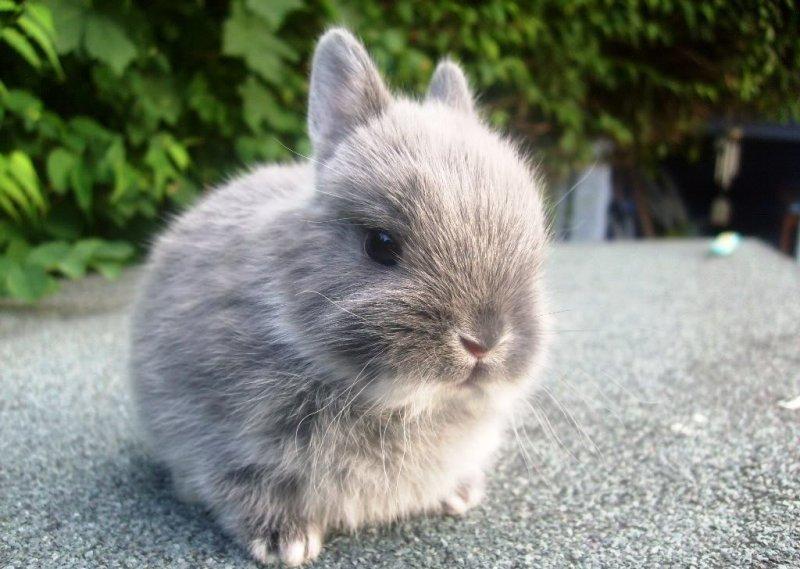
Healthy rabbit:
- Cheerful, cheerful, active.
- He has a clean, well-groomed coat without tangles.
- Clear, shiny eyes.
- Ears without signs of inflammation.
- There are no discharge and signs of disturbances in the digestive system.
You cannot buy:
- A lethargic, apathetic animal that looks unkempt.
- With loose, stale hair.
- With pus in my eyes.
- Unpleasant odor.
Also, you should not buy an aggressive animal into the family, although for decorative rabbits this is an exception to the rule.
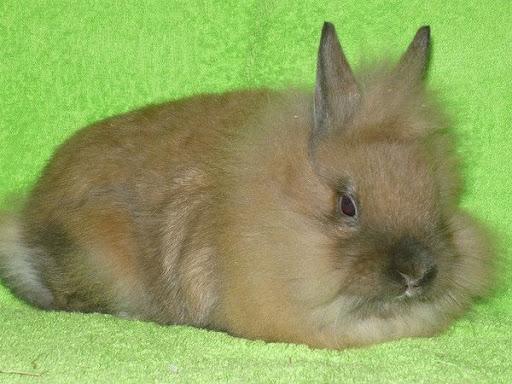
Where is the best place to buy a dwarf rabbit
In most pet stores and bird markets, sellers cannot name the breed or correctly identify the rabbit. If this is not important to the buyer, then in this case you need to focus on the external attractiveness of the animal and the signs of its health. If you want to buy a purebred animal and have offspring from it, this purchase option will not work.
For breeding and just if you want to have a thoroughbred pet with a passport and pedigree, it is better to acquire it through clubs of fans of decorative rabbit breeding or directly from professional breeders.
Such centers and farms exist abroad and in our country, mainly in Moscow and St. Petersburg. In this case, the buyer will receive a healthy vaccinated animal with veterinary documents, with a guarantee of correct breeding, without defects and hidden diseases.
But when buying, you still need to check the rabbit for health and ask the seller questions of interest. A professional will never refuse to advise a beginner and will give useful advice on keeping the animal at home.
